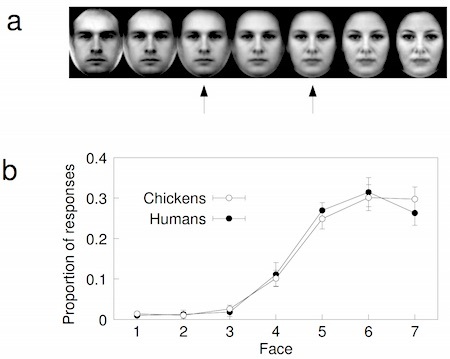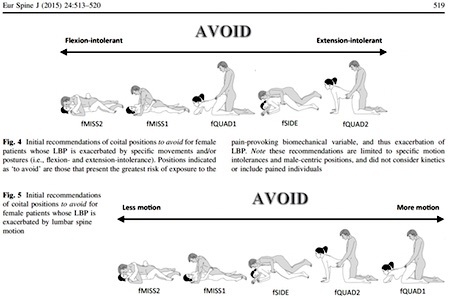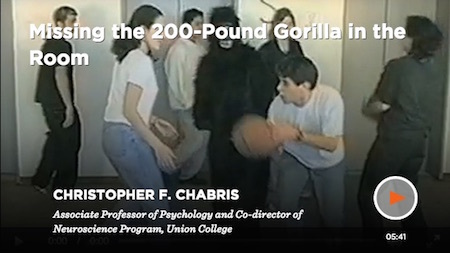Marc Abrahams's Blog, page 325
June 7, 2015
Polemics on Ethical Aspects in the Compost Business
Composting can indeed be a metaphor for ethics. This paper is a product of that fact:
“Polemics on Ethical Aspects in the Compost Business,” Josef Maroušek, Simona Hašková, Robert Zeman, Jaroslav Žák, Radka Vaníčková, Anna Maroušková, Jan Váchal, Kateřina Myšková, Science and Engineering Ethics, epub May 31, 2015. (Thanks to Ivan Oransky for bringing this to our attention.) The authors, at The Institute of Technology and Businesses in České Budějovice, and at Mendel University in Brno, Czech Republic, write [we have added boldness to the key sentence, which itself is pretty bold even without bold lettering]:
“This paper focuses on compost use in overpasses and underpasses for wild animals over roads and other similar linear structures…. The opinions of the sale representatives’ with regards to other alternatives of biowaste utilization and their own products were reviewed. The robust analyzes of several “accelerated” composts revealed that the quality was generally low. Only two accelerated composts were somewhat similar in quality to the blank sample that was produced according to the traditional procedure. Overlaps between the interests of decision makers on future soil fertility were weighed against the preferences on short-term profit. Possible causes that allowed the boom of these underperforming products and the possible consequences are also discussed. Conclusions regarding the ethical concerns on how to run businesses with products whose profitability depends on weaknesses in the legal system and customer unawareness are to follow.”
In this music-and-words video, the lead author discourses on a variety of topics:

June 6, 2015
“Inelegant Mathematics and Worse Social Science?”
For a while, a long while ago, some people thought they would soon make computers simulate the ways people behave with each other. This paper, published in 1974, suggested that maybe such things would not be simple or easy:
“Computer Simulations: Inelegant Mathematics and Worse Social Science?“, Hayward R. Alker, International Journal of Mathematical Education in Science and Technology, Volume 5, Issue 2, 1974.
“In each case, the non‐analytical nature of the computer model is not due to unusual mathematical ineptitude but derived from evidence contradicting the empirical validity of more elegant formalizations employing, respectively, formal logics and graph theory, differential equation systems, game theory and statistical models. Several analytically challenging problems concerning validity assessment, the nature of deep structure, and the policy‐relevant performance characteristics of complex models are mentioned. Moral, political, philosophical and pedagogical issues derive from the empirically provisional nature of all simulation versions of frequently controversial social theories, the frequent mystification of mathematical/computerized ‘results’, and the uneven practical utility and accessibility of social simulations.”
BONUS (mostly unrelated): An earlier Hayward R. Alker invented a fire alarm that used the telephone, obtaining a patent for it in 1939.

June 5, 2015
It was 20 years ago today. Sergeant Pepper taught the… No. The duck.
 It was 20 years ago today, Sergeant Pepper taught the band to—
It was 20 years ago today, Sergeant Pepper taught the band to—
No. That’s not what happened. What happened 20 years ago today is that a duck died, in spectacular fashion, and a scientist noticed how it happened, and took notes and photos to commemorate the discovery.
Today, Friday June 5th, 2015 is the 20th edition of Dead Duck Day, arriving precisely one year after last year’s Dead Duck Day. At exactly 17:55 h [Rotterdam time] we will honor the mallard duck that became known to science as the first (documented) ‘victim’ of homosexual necrophilia in that species, and earned its discoverer the 2003 Ig Nobel Biology Prize.
Please join the free, short open-air ceremony next to the new wing of the Natural History Museum Rotterdam (the Netherlands), right below the new Dead Duck Memorial Plaque— the very spot where that duck (now museum specimen NMR 9989-00232) met his dramatic end.
For a detailed history of Dead Duck Day, and details about what will happen at the celebration/commemoration, see the official Dead Duck Day website: www.deadduckday.com
Here’s video of the scientist, Kees Moeliker, telling all in a TED Talk:
And here are the Beatles, celebrating the passage of 20 years:
BONUS: Hayley Campbell’s tribute to Dead Duck Day, on Buzzfeed: “5 June Is Dead Duck Day – Please Observe A Moment Of Silence”
BONUS: Someone (we are not sure who) made this musical tribute to Dead Duck Day.

The Kajimoto laboratory (part 3): Pull the ears to navigate
If you’ve ever had difficulty navigating your way around a complex department store, or experienced difficulty with a tricky transfer at a subway station, you may be interested in one of the many cross-modal human/computer research projects [see previous article in this series] which have been developed by the Kajimoto laboratory (a department of The University of Electro-Communications, Tokyo, Japan). See: ‘Pull-Navi: A novel tactile navigation interface by pulling the ears’ 
“We propose a new type of navigation interface for walking. Previous works on navigation mainly used visual and acoustic sensation, which is not intuitive. Some other works used tactile stimulation onto the hand or the arm to generate pseudo pulling force. But the device tended to become large and heavy. We propose to use ear, instead of hand and arm to generate the sensation of being pulled. Being pulled the ear for navigation is a common situation when we were children and hence, the sensation should be quite intuitive. At the same time, the amount of necessary force is quite small.”
The lab provides a movie showing the device under development. [mp4 format]
This concludes our partial profile of the work of the Kajimoto laboratory – a page with links and info about more than 50 cross-modal human interface projects (2006 -2013) can be found here.
The lab has also recently implemented a new Youtube channel.

June 4, 2015
Nominative determinism: Christopher Deadman
Another case of nominative determinism: The Reading and Berkshire (UK) News reports:
Christopher Deadman killed while crossing tracks at Reading West station
A teenager was killed by a train when he chose to dash across the tracks to the opposite platform instead of using a footbridge, an inquest heard.
Christopher Deadman had been out for the afternoon with his friend Kieron Sewah and they had a few drinks before going to catch the train home.
However, a coroner heard that when the pair reached the station 19-year-old Christopher jumped down onto the tracks and tried to cross the rails to the other platform instead of using the footbridge.
In a statement read at the inquest Mr Sewah said the pair had drunk around six pints and three shots at a couple of bars in Reading before going to catch the train home to Basingstoke. [The incident took place on January 15, 2015]….
In a statement read to the inquest Mr Deadman’s mother, Amanda, said her son had felt invincible and did not always think before he acted.
“On occasions my son felt that he was invincible, he didn’t always think before he acted,” Mrs Deadman added.
“He did take risks and didn’t quite see that there were consequences to his actions. I am aware that he crossed railways lines in the past.”
Recording a narritive verdict Mr Bedford ruled out suicide, instead saying Mr Deadman’s death was an accident born out of his “devil-may-care” attitude.
(Thanks to investigator Alasdair Kergon for bringing this to our attention.)

Assessing the Relation Between Itching and Scratching
The quest advances, scratch by scratch, in the search for an excellent rodent itch model:
“Quantitative assessment of directed hind limb scratching behavior as a rodent itch model,” Hiroshi Nojima and E. Carstens, Journal of Neuroscience Methods, vol. 126, no. 2, June 2003, pp. 137-43. The authors, at Toyama Medical and Pharmaceutical University, Japan and University of California, Davis, USA, report:
“Hind limb scratching is used increasingly as an itch model in rodents. Scratching is usually quantified as the number of scratching bouts over a 60 min period…. [Our] results validate the total number of scratching bouts as an indicator of the magnitude of itch-related scratching.”
This unrelated video shows an example — an unusual example, in that it also involves a man’s head — of hind-leg scratching by a different species, a dog:

New new math, again, recalls the same old song
There’s a new way to teach and learn mathematics, replacing the old new way to teach and learn mathematics. The previous new method replaced previous previous new methods. NBC News 4, in Washington, DC, describes the newest of the new:
An Iowa woman jokingly calls it “Satan’s handiwork.” A California mom says she’s broken down in tears. A Pennsylvania parent says it “makes my blood boil.”
What could be so horrible? Grade-school math.
As schools around the U.S. implement national Common Core learning standards, parents trying to help their kids with math homework say that adding, subtracting, multiplying and dividing has become as complicated as calculus.
The problem is timeless. It was best, er, summed up by Tom Lehrer, in his song called “New Math”:
(Thanks to Mike Leavell for reminding us of this.)

June 3, 2015
Podcast #14: Chickens prefer beautiful people
Chickens, beautiful, people, and severed feet (and other things) turn up in this week’s Improbable Research podcast.
SUBSCRIBE on Play.it or iTunes, to get a new episode every week, free.
[NEWS: Soon, the podcast will also be available on Spotify.]
This week, Marc Abrahams tells about:
Chickens prefer beautiful people. (“Chickens Prefer Beautiful Humans.” Stefano Ghirlanda, Liselotte Jansson, and Magnus Enquist, Human Nature, vol. 13, no. 3, 2002, pp. 383-9. / “Do Mynahs prefer peacock feathers of more regular pattern?” Tomomichi Kobayashi, Ornis Svecica 9, 1999, 59–64. Featuring dramatic readings by Jean Berko Gleason.)
Are beautiful people more intelligent? (Satoshi Kanazawa [pictured here] and Jody L. Kovar (2004). ‘Why Beautiful People Are More Intelligent.’ Intelligence 32: 227–43. /
 Satoshi Kanazawa (2007). ‘Beautiful Parents Have More Daughters: A Further Implication of the Generalized Trivers-Willard Hypothesis (gTWH).’ Journal of Theoretical Biology 244 (1): 133–40. Featuring dramatic readings by Daniel Rosenberg.)
Satoshi Kanazawa (2007). ‘Beautiful Parents Have More Daughters: A Further Implication of the Generalized Trivers-Willard Hypothesis (gTWH).’ Journal of Theoretical Biology 244 (1): 133–40. Featuring dramatic readings by Daniel Rosenberg.)Improbable Medical Review. (“Feet Rolled Over by Cars: Radiological and Histological Considerations from Experiments,” J. Falk, J. Michael, P. Eysel, M. A. Rothschild, International Journal of Legal Medicine, vol. 122, no. 2, March 2008, pp. 97–100. / “A Case Study of Gut Fermentation Syndrome (Auto-Brewery) with Saccharomyces cerevisiae as the Causative Organism.” Cordell, Barbara, and Justin McCarthy, International Journal of Clinical Medicine, vol. 4, 2013, pp. 309–12. / “Papaya (Carica papaya) Consumption is Unsafe in Pregnancy: Fact or Fable? Scientific Evaluation of a Common Belief in Some Parts of Asia Using a Rat Model,” Adebowale Adebiyi, P. Ganesan Adaikan, and R.N.V. Prasad, British Journal of Nutrition, vol. 88, no. 02, August 2002, pp 199–203. Featuring dramatic readings by Corky White.)
Soda and Pop. (“Soda or Pop?”, Luanne von Schneidemesser, Journal of English Linguistics, 1996, vol. 24, no. 4, pp. 270–87. Featuring dramatic readings by Andrew Hunter Murray.)
The mysterious John Schedler perhaps did the sound engineering this week.
The Improbable Research podcast is all about research that makes people LAUGH, then THINK — real research, about anything and everything, from everywhere —research that may be good or bad, important or trivial, valuable or worthless. CBS distributes it, both on the new CBS Play.it web site, and on iTunes (and soon, also on Spotify).

Spine motion during coitus (with commentary on the implications)
Physicists and engineers, among others, might be able to appreciate the care that went into this study of female spine motion during coitus:
 “Documenting female spine motion during coitus with a commentary on the implications for the low back pain patient,” Natalie Sidorkewicz [pictured here] and Stuart M. McGill, European Spine Journal, Volume 24, Issue 3, March 2015, pp. 513-520. The authors, at the University of Waterloo, Canada, report:
“Documenting female spine motion during coitus with a commentary on the implications for the low back pain patient,” Natalie Sidorkewicz [pictured here] and Stuart M. McGill, European Spine Journal, Volume 24, Issue 3, March 2015, pp. 513-520. The authors, at the University of Waterloo, Canada, report:
PURPOSE: To describe female lumbar spine motion and posture characteristics during coitus and compare these characteristics across five common coital positions….
METHODS: Ten healthy males and females performed coitus in the following pre-selected positions and variations: QUADRUPED (fQUAD1 and fQUAD2 where the female is supporting her upper body with her elbows and hands, respectively), MISSIONARY (fMISS1 and fMISS2 where the female is minimally and more flexed at the hips and knees, respectively), and SIDELYING. An electromagnetic motion capture system was used to measure three-dimensional lumbar spine angles that were normalized to maximum active range of motion—a transmitter and receiver were affixed to the skin overlying the lateral aspect of the pelvis and the spinous process of the twelfth thoracic vertebra, respectively….
RESULTS: Based on the spine kinematic profiles of each position, the least-to-most recommended positions for a female flexion-intolerant patient are: fMISS2, fMISS1, fQUAD1, fSIDE, and fQUAD2.
Here’s further, graphic detail from the study:
(Thanks to Delia Bailey for bringing this to our attention.)
In this video, Professor McGill savors the spine:

Airport security: the overlooked weapons and woman-in-a-gorilla-suit
“Undercover Report: Airport Security Misses 95 Percent of Weapons and Explosives” is the headline on a short essay in BigThink. Here’s the kicker:
Christopher Chabris, associate professor of psychology at Union College, explains how airport security officials easily miss the forest for the trees. In 2004 he was the co-recipient of an Ig Nobel Prize for his now-landmark experiment “Gorillas in Our Midst,” which demonstrated that when subjects focused their attention on one thing, they often failed to notice something as conspicuous as a woman in a gorilla suit.

Marc Abrahams's Blog
- Marc Abrahams's profile
- 14 followers






